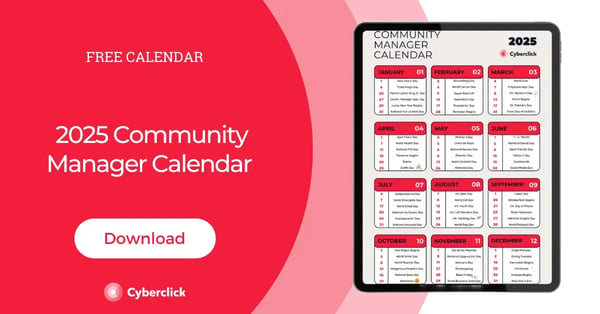An editorial calendar is a tool that helps you plan, organize, and visualize the content you’re going to create and publish over a set period. Whether it’s a blog, a newsletter, social media, or a 360-degree content marketing strategy, the editorial calendar acts like a roadmap that ensures consistency, focus, and efficiency in execution.
That being said, many brands make the mistake of creating their content plan based on intuition. This can lead to publishing content that doesn’t truly interest the audience, resulting in underwhelming performance on key metrics. To avoid relying on luck for every post, we always recommend adopting a data-driven approach to your content plan by basing your editorial planning on real, measurable data. Instead of asking “What content do we want to publish?” ask “What content is our audience searching for, consuming, and valuing?”
In this article, we’ll show you how to build a data-driven editorial calendar. We’ll go over what data to analyze, how to turn it into content ideas, and how to organize it. Because good editorial planning isn’t just about organizing content, it’s about making it convert.

Benefits of a Data-Driven Approach to Creating an Editorial Calendar
Before getting into how to develop a data-driven content marketing strategy, we want you to understand all the benefits of adopting this approach for your company’s editorial calendar.
-
Accuracy in Topic Selection: By basing topic choices on real data (such as keyword analysis, user behavior, and market trends), you make sure that each piece of content meets your audience’s needs and interests, boosting relevance and effectiveness.
-
Optimized Content Performance: Putting metric analysis at the center of your strategy helps you identify which types of content and formats generate the best results. This insight is crucial for fine-tuning your strategy and developing content that drives sales.
-
Improved Operational Efficiency: A data-driven editorial calendar makes planning and resource allocation easier, reduces redundant efforts, and improves team collaboration. It also allows you to anticipate content needs and schedule posts more effectively.
-
Spotting Opportunities and Trends: Constantly monitoring data helps detect changes in consumer behavior and new market trends, giving you the chance to proactively adjust your content strategy.
What Data to Use for an Effective Editorial Calendar
Internal Data
Internal data is information your company collects. Analyze the performance of previously published content using key metrics like:
-
Visits
-
Time on page
-
Bounce rate
-
Engagement
-
Conversions
This helps identify what types or topics of content work best. Tools like Google Analytics, Search Console, and social media analytics will be very helpful here.
External Data
External data informs you about audience behavior online and what your competitors are doing. When designing an editorial calendar, one of the most important external data points is the most searched keywords with high ranking potential. Knowing which keywords users type into Google or social media helps you find relevant content ideas and optimize your SEO strategy.
Tools like Ubersuggest, SEMrush, and Ahrefs are good for identifying keywords. This exercise also inspires topic ideas.
Beyond keyword research, look at what your direct competitors publish and how their audience reacts. This can give you valuable ideas and help identify market gaps to exploit.
Finally, keeping up with market trends helps you ride the wave of new content topics gaining interest. Being among the first to cover these topics can give you a strong competitive edge. Tools like Google Trends and Exploding Topics are handy for this.
Qualitative Data
This means listening closely to your audience and drawing insights from that. For example, collect direct feedback through surveys, blog comments, and social media interactions. You can also explore forums like Quora or Reddit to find questions or topics your audience cares about.
Doing this manually can be time-consuming, so social listening tools like Brand24 or Hootsuite’s social listening software can help automate the process.

How to Turn Data Into Topics and Formats for Your Content Plan
We’ve covered how to extract relevant topics from data analysis. For example, if data shows many users are searching for or talking about “remote work productivity,” creating content like “Tips for Being More Productive When Working Remotely” or “How to Create a Comfortable Work From Home Environment” is a smart data-driven choice.
What’s trickier is figuring out which content format works best for each topic and how to schedule it in your editorial calendar. Here’s how to translate those insights into the right format and placement in your content plan.
How to Choose the Most Effective Content Format Based on Data
The right format depends on a combination of factors:
-
Audience Preferences: Analyze how your audience consumes content. If your users spend more time on visual platforms like Instagram or YouTube for industry info, prioritize formats like videos or infographics.
-
Message Type: Some messages suit certain formats better. For example, detailed tutorials work well as videos, while quick tips may be best as infographics or images.
-
Available Resources: Consider what resources your company has. If you have a graphic design team, producing lots of audiovisual content is possible. If not, prioritize written content like blog posts.
Our advice is to adapt these factors to your reality. For instance, your audience might consume a lot of YouTube content, but if you lack the budget or team to produce videos, start with a different channel, like a blog or social media. Building a solid content foundation step by step is often the best approach.
How to Plan the Publishing Schedule for Each Piece of Content
Once you know your topics and formats, organize their publication strategically in your editorial calendar to maximize impact. Here’s how to plan effectively within an inbound or content marketing strategy:
-
Identify Key Dates: Consider relevant events, seasons, or important dates in your industry. For example, if you sell flowers, plan content around Mother’s Day or Valentine’s Day. Using data-driven insights, check if those dates historically impact conversions or content views, and if not, they may not be worth focusing on.
-
Set Publishing Frequency: Especially for social media, analyze when your posts get the most views and engagement. Based on this, decide how often per week or month you’ll post on each active channel. Consistency is key for algorithms to promote your content.
-
Assign Responsibilities: Your content plan should clearly state who is responsible for creating, reviewing, and publishing each piece.
-
Use Management Tools: Platforms like Trello, Asana, or Google Sheets help team collaboration and task tracking efficiently.
Tips for Designing a Data-Driven Content Plan
Define Clear, Measurable Goals for Your Editorial Calendar
Working with data requires precise goals to pick the most valuable information. We recommend using the SMART framework, which means setting goals that are specific, measurable, achievable, relevant, and time-bound.
For example, instead of a vague goal like “increase website traffic,” set “increase organic traffic by 15% over the next three months.” This allows precise measurement and data-driven decision making. SMART goals help you focus on outcomes that truly move the needle.

Monitor and Adjust Your Content Plan
User interests change over time, and your content should adapt accordingly. Your data-driven strategy requires regular check-ins to see how your audience’s interests evolve.
Schedule regular reviews to analyze data, spot new trends, and adjust your plan to create personalized, audience-relevant content.
Plan Content Production in Advance
Plan your editorial calendar proactively to avoid rushing publications. Creating content with enough time leads to better quality.
At the same time, don’t make your plan too rigid and leave room for flexibility to address last-minute trends or data insights that suggest publishing specific topics at certain times.
Responsable de la estrategia de contenidos y visibilidad en Cyberclick, con enfoque Allbound y especialización en posicionamiento SEO, GEO y automatización con IA. Gestión avanzada del CRM con HubSpot: base de datos, workflows, lead nurturing, scoring y reporting. Experiencia en marketing digital, comunicación corporativa y periodismo, uniendo estrategia, creatividad y tecnología para captar y convertir leads cualificados.
Responsible for content and brand visibility strategy at Cyberclick, with an Allbound approach and specialization in SEO, GEO (Generative Engine Optimization), and AI-powered automation. Advanced HubSpot CRM management: database segmentation, workflows, lead nurturing, scoring, and reporting. Background in digital marketing, corporate communications, and journalism—combining strategy, creativity, and technology to attract and convert qualified leads.



.jpg)


Leave your comment and join the conversation